Cobalt
Type of resources
Topics
Keywords
Contact for the resource
Provided by
Years
Formats
Update frequencies
-
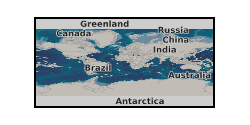
NERC Grant NE/M011488/1 X-ray powder diffraction patterns as xy datasets of limonites from Acoje (Philippines), Caldag (Turkey), Nkamouna (Cameroon), Piaui (Brazil) and Shevchenko (Kazakhstan) laterite deposits; reduced sulphide ore from Thakaringa Mine (Australia) and Captain deposit (Canada); processing residues from the Kevitsa Mine (Finland). The data were acquired during the NERC SoS Minerals CoG3 project between 2015 and 2018 using a PANAlytical X’Pert Pro diffractometer at the Natural History Museum, London, UK. Powdered samples were back loaded into a deep well holder, loaded into the instrument in reflection geometry and data collected using Co Kalpha radiation between 3 and 70 degrees 2Theta. These data were used primarily for phase identification. This may be useful within the mining sector, resource assessment, processing or prospecting, geo- or material scientists and processing engineers / metallurgists. The data were acquired in the Core Research Laboratories, Natural History Museum by the NHM CoG3 team. NERC grant: CoG3: The geology, geometallurgy and geomicrobiology of cobalt resources leading to new product streams
-
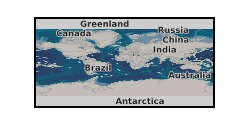
NERC Grant NE/M011488/1 ICP bulk chemistry as wt% oxide or elemental ppm of limonites from Acoje (Philippines), Caldag (Turkey), Nkamouna (Cameroon), Piaui (Brazil) and Shevchenko (Kazakhstan) laterite deposits; reduced sulphide ore from Thakaringa Mine (Australia); processing residues from the Kevitsa Mine (Finland). The data were acquired during the NERC SoS Minerals CoG3 project between 2015 and 2018 by ALS Global using either lithium borate fusion or 4 acid digestion. These data were used to assess bulk geochemistry, and the Co and Ni loading of the resources. This may be useful within the mining sector, resource assessment, processing or prospecting, geo- or material scientists and processing engineers / metallurgists. NERC grant: CoG3: The geology, geometallurgy and geomicrobiology of cobalt resources leading to new product streams
-
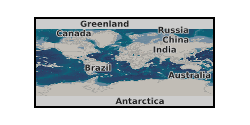
Sample list and experimental conditions. Ilumina Mi Sequencing OTU results for samples from Acoje Nickel Laterite, Philippines and Shevchenko, Ukraine. Illumina Mi Sequencing Results from Acoje, Philippines and Shevchenko Ukraine. These data are from a proof of concept study examining the bioextraction of cobalt and nickel from laterites stored at the Natural history Museum. The data here represent the sequencing of the microbial populations in the laterite samples from Acoje, Philippines, and Shevchenko, Ukraine.
-
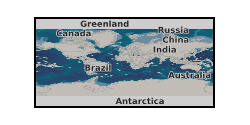
Data from NERC grant, Natural Enrichments in E-tech Elements (Cobalt, Gallium, Indium, Tellurium, Lithium, rare earth elements) [NEETE].
-
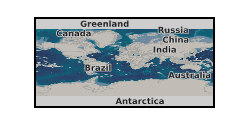
NERC Grant NE/M011488/1 Electron microprobe analyses of Mn-oxyhydroxide phases as elemental percentages per point analysis. Mn-oxyhydroxide phases were within limonites from Acoje (Philippines), Caldag (Turkey), Nkamouna (Cameroon), Piaui (Brazil) and Shevchenko (Kazakhstan) laterite deposits. The data were acquired during the NERC SoS Minerals CoG3 project between 2015 and 2018 using a Cameca SX100 electron microprobe at the Natural History Museum, London, UK. Point analyses were performed on samples set within epoxy resin blocks, polished and coated with carbon. All elements were analysed using wavelength dispersive X-ray spectrometers. These data were used to identify the Co and Ni bearing host minerals within each natural resource and to assess the amount and variability of these elements within specific Mn-oxyhydroxide phases. This may be useful within the mining sector, resource assessment, processing or prospecting, geo- or material scientists and processing engineers / metallurgists. The data were acquired in the Core Research Laboratories, Natural History Museum by the NHM CoG3 team. NERC grant: CoG3: The geology, geometallurgy and geomicrobiology of cobalt resources leading to new product streams
-
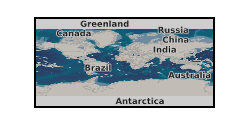
NERC Grant NE/M011488/1 Electron microprobe analyses of Fe-oxide and Fe-oxyhydroxide phases as elemental percentages per point analysis. The phases were within limonites from Acoje (Philippines), Caldag (Turkey), Nkamouna (Cameroon), Piaui (Brazil) and Shevchenko (Kazakhstan) laterite deposits. The data were acquired during the NERC SoS Minerals CoG3 project between 2015 and 2018 using a Cameca SX100 electron microprobe at the Natural History Museum, London, UK. Point analyses were performed on samples set within epoxy resin blocks, polished and coated with carbon. All elements were analysed using wavelength dispersive X-ray spectrometers. These data were used to identify the Co and Ni bearing host minerals within each natural resource and to assess the amount and variability of these elements within specific Fe-oxide or Fe-oxyhydroxide phases. This may be useful within the mining sector, resource assessment, processing or prospecting, geo- or material scientists and processing engineers / metallurgists. The data were acquired in the Core Research Laboratories, Natural History Museum by the NHM CoG3 team. NERC grant: CoG3: The geology, geometallurgy and geomicrobiology of cobalt resources leading to new product streams
-
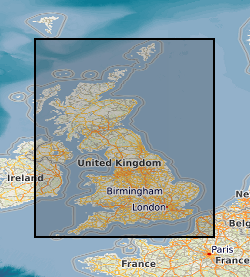
This dataset represents the first publication of complete national maps from the Geochemical Baseline Survey of the Environment (G-BASE) and TellusNI projects, whose aim was to conduct a national geochemical survey of the United Kingdom in order to improve understanding of our geology and environment and provide quantitative evidence against which to gauge future environmental change. This dataset consists of a series of interpolated raster (ASCII grid) maps displaying the concentrations of a suite of chemical elements (and oxides) in the stream sediments of the United Kingdom. The chemical elements are as follows: Arsenic, Barium, Calcium (CaO), Chromium, Cobalt, Copper, Iron (Fe2O3), Lanthanum, Lead, Magnesium (MgO), Manganese (MnO), Nickel, Potassium (K2O), Rubidium, Uranium, Vanadium, Zinc and Zirconium.
 NERC Data Catalogue Service
NERC Data Catalogue Service